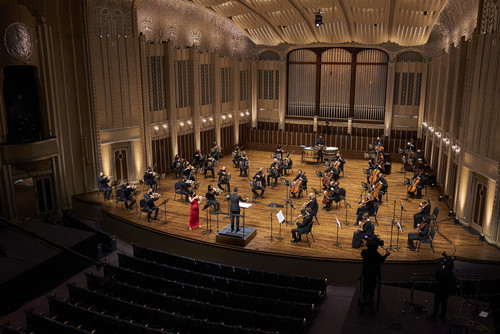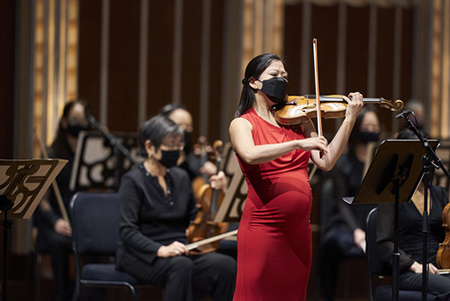by Daniel Hathaway

Episode 5 is subtitled “Musical Patterns,” a nod to the fact that three of the four works are examples of “minimalism,” or maybe more precisely, “repetitive music.” “Minimalism” suggests the system that Marie Kondo would like to impose on your wardrobe, while what we’re talking about here is the kind of propulsive, machine-like music with slow-moving changes in layers and textures that most listeners first encountered in Philip Glass’s film scores.
This concert began with the opening of Glass’s Glassworks in an arrangement by Christian Badzura. A simple piano line introduced by Marc-André Hamelin was soon joined by the low strings, who set out a harmonic groove, then by the upper strings who entered with their own rhythmic and harmonic pattern. Lyrical moments alternated with motoric sections, and just about at the point when repetitions became hypnotic, the movement faded away.
This style of writing looks simple enough to play, until you try it and realize that maintaining repetitive patterns is difficult work — the more so if you’re operating under social distancing protocols and have to precisely line events up with colleagues on the other side of the stage. As expert at ensemble playing as Cleveland Orchestra musicians are, some tiny splattering of attacks happened from time to time between piano notes and string pizzicatos.

Lee promised in her prefatory remarks that the piece would be “powerful and deeply moving,” and so it was. Her striking violin ostinato opened the piece and grew more and more intense, welcoming other players into the mix. As the work progressed, its momentum was interrupted at the end of each six-bar section by a ritualistic percussion statement: Marc Damoulakis, playing bass drum with one hand, wood block with the other. The last time around, upper strings played high harmonics almost at the threshold of audibility.

Hamelin crafted a laid-back, flawless performance of the piano part, and Parameswaren closely shadowed him, keeping the string orchestra accompaniment taught and moving forward.
John Adams’ Shaker Loops, the main work and the one truest to the “Musical Patterns” idea came last on the program. Speaking via video from his studio in Berkeley, California, Adams said the piece, which passed through a long series of evolutions, most clearly embraced the minimalist movement as represented in the works of Glass, Reich, and other composers of the 1970s.

The Cleveland Orchestra gave Shaker Loops a strong, tireless performance that also featured moments of great beauty. We often compare the precision of this ensemble’s playing to that of a well-oiled machine, but here Parameswaren and the musicians added warm, human elements as well.
Photos by Roger Mastroianni courtesy of The Cleveland Orchestra.
Published on ClevelandClassical.com February 11, 2021
Click here for a printable copy of this article



